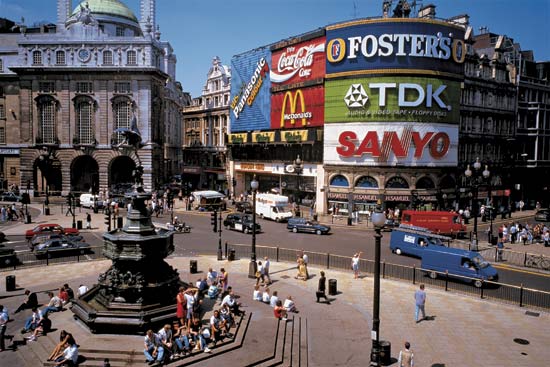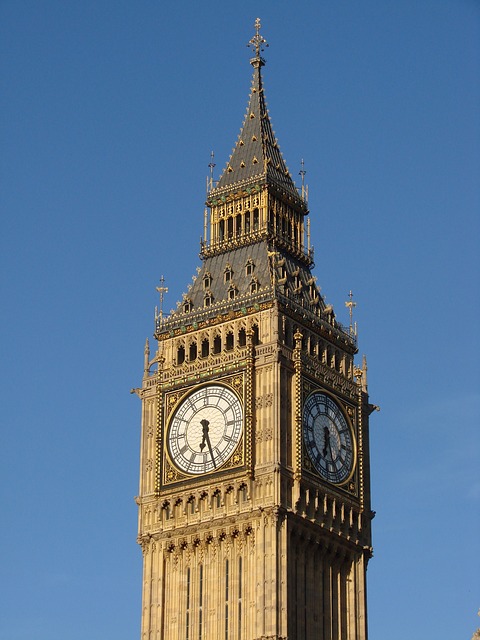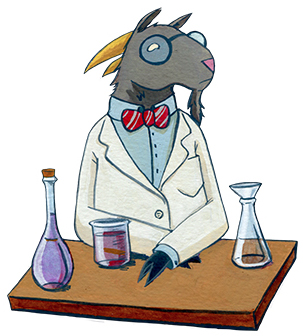Advertising Revelations
From Londonhua WIKI
Advertising Revelations
 Andrew Kacherski |
Contents
Abstract
War advertising over the ages has changed. In this milestone I will compare the poster advertisements produced during the world wars to the ones produced today for the war on terror. Advertising will also change in the future. I plan to evaluate trends today to gauge where it is going in the future. I plan to visit tube and train stations because they have a lot of advertisements. Bus stands tend to not have posters. I will also go to the London Advertising Museum. I have had two writing credits transfer in from another college and I have taken WR 2010 at wpi. I hope to see how the advertising reflects the society it was meant to impact.
Introduction
I suggest you save this section for last. Describe the essence of this project. Cover what the project is and who cares in the first two sentences. Then cover what others have done like it, how your project is different. Discuss the extent to which your strategy for completing this project was new to you, or an extension of previous HUA experiences.
As you continue to think about your project milestones, reread the "Goals" narrative on defining project milestones from the HU2900 syllabus. Remember: the idea is to have equip your milestone with a really solid background and then some sort of "thing that you do". You'll need to add in some narrative to describe why you did the "thing that you did", which you'd probably want to do anyway. You can make it easy for your advisors to give you a high grade by ensuring that your project milestone work reflects careful, considerate, and comprehensive thought and effort in terms of your background review, and insightful, cumulative, and methodical approaches toward the creative components of your project milestone deliverables.
Background
World War II
This time period was dominated by world war propaganda. Not just in the United Kingdom, but in all countries involved in the wars. Propaganda has a certain negative connotation when used today but that was not the case then. This was a way for the government and different companies to generate support for the war effort. This propaganda included posters, newspaper articles, radio transmissions, and films. These advertisements had the themes: resistance, victory, work, evacuation of children, blackout, preventing waste, good vs. evil, support, and careless talk [1]. These posters often depicted women working in factories or other male dominated jobs to show that they can replace men and help with the war efforts. These wars encouraged companies to increase advertising. Ad agencies focused on maintaining demand until the war was over and merchandise was readily available to consumers again [2].
In 1939, the Ministry of Information was formed to create posters to influence public opinion. There work included posters to convince people to grow their own food to cut down on import costs. Others encouraged people to reconsider their weekend trips and encourage the women to take jobs in the factories. [3] The Ministry of Information also made propaganda posters to warn again the dreaded 'careless talk.' This was a precaution against enemy spies in society, they wouldn't gain any important information.
Resistance
Victory
Work
Evacuation
Evacuation: The evacuation posters during WWII were very straightforward. They told the viewer about evacuating London in case of aerial bombings. These posters were made to get the idea in the back of peoples’ minds. This way when it came time to evacuate, such as Operation Pied Piper, the idea of evacuation wasn’t new to them and they understood what they had to do. These posters mostly depicted the evacuation of women and children. The idea was that the men could handle themselves or stay back and fight for the city. The women and children had to be brought out of the city to be protected. During World War II, it was estimated that over 1.5 million people were evacuated from their homes. (insert footnote here). The posters were often bright and colorful to draw attention and catch the viewers eye. Bright colors are also synonymous advertising related to children so this also caught the child’s eye. If the posters were not bright and colorful, then they were every simple; they had just a few words. This allowed the posters to be read quickly as the viewer walked by quickly on the platform to catch their train.
After the bomb threats began to materialize, people began to return to their homes. By 1939, almost half of the evacuees had returned home. This was not advised by the government because their still felt that bomb threats were imminent. This led them to start posting material advising mothers not to bring their children home. These kinds of posters appealed to mothers’ maternal sense. The poster depicted below shows Hitler convincing a mother watching over her children to bring the children back to the city. It implies that he will do horrible things to them if he brings them back based on his language and body positioning. (insert footnote here)
Blackout
Preventing Waste
Waste was a major concern during WWII. Waste caused factories to have to build consumer goods instead of war materials. Posters during this time called for recycling, rationing, and self-growing. Clothing is a major source of waste. Posters called for ‘Make Do and Mend.’ This called for people to not buy new clothes. It encouraged them to be content with the clothing they had now, and if something was tattered that they mend it themselves. There were also posters rag donations. It encouraged people to donate any material scraps to rag collectors so that the material could be used for blankets and uniforms for the soldiers. Food waste was another concern during the war. The food supply was limited during the war. To help combat this problem the government created a series of posters. One kind encouraged people to grow their own food. This allowed people to grow what they like and not put strain on farmers or the food packaging industry. This saved tin cans and other materials needed to pack food so that they could be used for war materials such as helmets and bullets. There were also posters created about portion size. The food supply was limited since some food companies changed their factories to create war materials. These posters had slogans such as ‘A clear plate means a clear conscience.’ This encouraged people not to take more food than they could eat. This helped to prevent waste and aimed to allow everyone an equal opportunity to food. There was also a campaign about milk. Calcium intake among vulnerable sections of British Society was a priority for the Ministry of Food. The increased calcium was believed to help keep pregnant women and children healthy. During this time, Milk rations were increased for these two groups. This even initiated a provision of free milk to school children from 1946 to 1971. The posters had slogans such as ‘Milk: The Backbone Of Young Britain.’ This poster depicted a child with a glass bottle of milk as a spine drinking a glass of milk. Aside from food people were encouraged to recycle. Children were encouraged to collect metal, paper, and rags for recycling. The poster below depicts soap cartons collected by children being used as artillery shells in war. Bones were also highly sought after. The recycling of bones allowed them to be used as glue or fertilizer. During the war Britain had to be self-sufficient due to the attacks shipping. (insert footnote here)
Good v. Evil
These types of posters were used as propaganda during the war. It was a way for the British government to justify their involvement in the war. The posters also aimed at the viewers’ emotions. They were aimed to boost morale and share specified ideologies (Jennifer Samborski). The posters portrayed the Germans as evil, heartless people that needed to be stopped.
Support
Careless Talk
- Example.jpg
Caption1
- Example.jpg
Caption2
Modern Day
Section 2: Deliverable
In this section, provide your contribution, creative element, assessment, or observation with regard to your background research. This could be a new derivative work based on previous research, or some parallel to other events. In this section, describe the relationship between your background review and your deliverable; make the connection between the two clear.
Comparisons
...use as many subsections or main sections as you need to support the claims for why what you did related to your Background section...
Interpretations
...and so on and so forth...
Future of Advertising
where its going in the future.
Gallery
Conclusion
In this section, provide a summary or recap of your work, as well as potential areas of further inquiry (for yourself, future students, or other researchers).
References
- Age, A. (2005, March 28). 1940s War, Cold War and Consumerism. Retrieved May 24, 2017, from http://adage.com/article/75-years-of-ideas/1940s-war-cold-war-consumerism/102702/
- McDonough, J., & Egolf, K. (2015). The advertising age encyclopedia of advertising. Routledge.
- World War Two : Government Posters. (2008). Retrieved May 29, 2017, from https://nationalarchives.gov.uk/documents/education/propaganda.pdf
- Samborski, J. World War II Propaganda.
External Links
If appropriate, add an external links section



